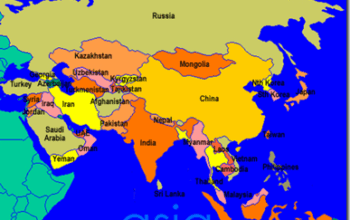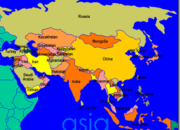The Dirac Prize for Field Theorists represents a significant accolade within the realm of theoretical physics. It is named in honor of the illustrious physicist Paul Dirac, known for his profound contributions to quantum mechanics and quantum field theory. This prize serves not merely as a recognition of individual achievement; it embodies a commitment to fostering innovation and intellectual rigor within the domain of field theory. It is essential to dissect the implications of such an award, the criteria for selection, and the broader context of field theory within modern physics.
The modern landscape of theoretical physics is heavily dominated by the intricacies of field theories. Broadly, these theories explore and describe the fundamental forces of nature and the interactions between elementary particles. The significance of field theories cannot be overstated; they provide the backbone for the Standard Model of particle physics, an elegant and robust description of electromagnetic, weak, and strong interactions. Within this context, the Dirac Prize serves as a beacon, illuminating extraordinary contributions that advance our understanding.
The criteria for awarding the Dirac Prize are multifaceted, encompassing originality, depth, and breadth of the scientific work presented. Candidates are evaluated not only on the immediate impact of their research but also on the potential ramifications for future explorations in theoretical physics. This comprehensive approach underscores the dynamic nature of the field. In doing so, the award acknowledges contributions that may initially appear esoteric but are poised to catalyze groundbreaking advancements in our understanding of the universe.
One common observation regarding the Dirac Prize is its ability to highlight a trend towards interdisciplinary research within field theory. Modern physicists increasingly blend principles from various areas of study, such as mathematics, cosmology, and even computer science. This intersection of disciplines reflects a deeper fascination with the unification of knowledge. For instance, the utilization of advanced mathematical frameworks, such as topology and category theory, in quantum field theory exemplifies how diverse fields converge to enhance our understanding of fundamental questions.
However, the reasons behind the allure of field theory extend beyond mere intellectual curiosity. There exists a profound philosophical dimension inherent in the fundamental quest for understanding the building blocks of nature. Field theory often grapples with concepts that challenge traditional perceptions of reality, such as non-locality, superposition, and entanglement. These phenomena not only intrigue scientists but also captivate the imagination of the broader public. The Dirac Prize serves to amplify this fascination by acknowledging those who tackle these intricate issues with audacity and rigor.
History plays an indispensable role in contextualizing the Dirac Prize. The influence of Paul Dirac on contemporary physics is undeniable; his work laid the foundation for subsequent generations of physicists. By establishing the Dirac Prize, the physics community does not merely pay tribute to a seminal figure but also reinforces the notion that groundbreaking ideas are often born from relentless inquiry and creativity. The prize echoes Dirac’s own philosophy that to be a successful physicist, one must possess a blend of creativity and rigorous analytical thinking.
Furthermore, the impact of field theories extends to practical applications, serving as a testament to the utilitarian aspects of theoretical research. Quantum field theories have led to the development of technologies such as semiconductors and quantum computing. This convergence of theoretical inquiry and practical realization underlines the importance of awarding those who navigate the intricate labyrinth of theoretical physics. It emphasizes that theories, while abstract, can yield tangible benefits that permeate everyday life.
In addition to technical and philosophical implications, the awarding of the Dirac Prize also possesses a cultural significance within the scientific community. It creates a dialogue surrounding the role of mentorship and collaboration among physicists. Many recipients of the Dirac Prize have attributed their success to the influence and guidance of their predecessors and colleagues. This acknowledgment fosters an environment of collaboration, urging young researchers to engage and seek mentorship. It emphasizes the idea that scientific progress is a collective endeavor, emerging from shared knowledge and experiences.
The ceremony surrounding the Dirac Prize is not merely a formal event. It symbolizes the acknowledgment of the relentless pursuit of enlightenment by physicists. It becomes a celebration of collective aspirations toward a more profound comprehension of nature’s complexities. Attendees gather, sharing in the achievements recognized by this illustrious award, fostering a renewed commitment to scientific exploration. In this context, the Dirac Prize is not just an accolade but an invigorating call to action for the scientific community.
In conclusion, the Dirac Prize for Field Theorists stands as a reflection of the vitality and dynamism inherent in theoretical physics. It transcends mere recognition, symbolizing the intertwining of creativity, interdisciplinary collaboration, and societal impacts stemming from field theory. As recipients continue to push the boundaries of knowledge, they inspire future generations to explore the rich tapestry of theoretical physics. In acknowledging these wanderers at the frontier of science, the Dirac Prize fosters an enduring legacy that not only honors the past but also ignites the imagination for what lies ahead in the vast expanses of our universe.










